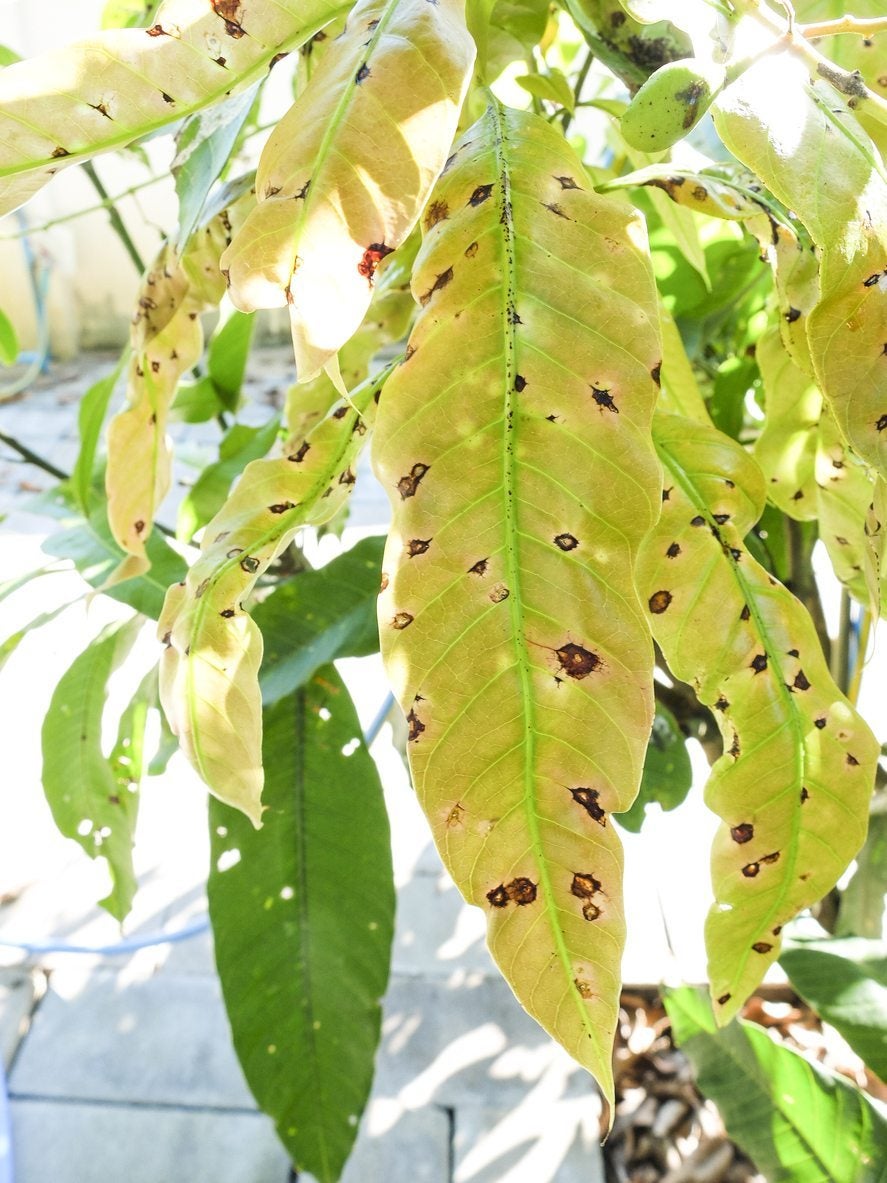
Mangos have been cultivated in India for more than 4,000 years and reached the Americas in the 18th century. Today, they are readily available at many grocers, but you’re even luckier if you happen to have your own tree.
Delicious they may be, but the trees are susceptible to a number of mango tree diseases. Treating a sick mango means correctly identifying mango disease symptoms. Read on to find out about diseases of mangos and how to manage mango diseases.
Mango Tree Diseases
Mangos are tropical and sub-tropical trees that thrive in regions with warm temperatures. Indigenous to India and southeast Asia, trees are particularly susceptible to two diseases of mango: anthracnose and powdery mildew. Both of these fungal diseases attack emerging panicles, flowers, and fruit. Of the two diseases, anthracnose (Colletotrichum gloeosporioides) afflicts mangos most severely.
In the case of anthracnose, mango disease symptoms appear as black, sunken, irregularly shaped lesions that grow resulting in blossom blight, leaf spotting, fruit staining, and eventual rot. The disease is fostered by rainy conditions and heavy dews. Powdery mildew is another fungus that afflicts leaves, flowers, and young fruit. Infected areas become covered with a whitish powdery mold.
As leaves mature, lesions along the midribs or underside of the foliage become dark brown and greasy looking. In severe cases, the infection will destroy flowering panicles resulting in a lack of fruit set and defoliation of the tree. Mango scab (Elsinoe mangiferae) is another fungal disease that attacks leaves, flowers, fruit, and twigs.
The first signs of infection mimic the symptoms of anthracnose. Fruit lesions will be covered with a corky, brown tissue and leaves become distorted. Verticillium wilt attacks the tree’s roots and vascular system, preventing the tree from up-taking water. Leaves begin to wilt, brown, and desiccate, stems and limbs die back, and the vascular tissues turn brown. The disease is most damaging to young trees and may even kill them.
Parasitic algal spot is another infection that more rarely afflicts mango trees. In this case, mango disease symptoms present as circular greenish/grey spots that turn rust red on the leaves. Infection of stems can lead to bark cankers, stem thickening, and death.
Sign up for the Gardening Know How newsletter today and receive a free copy of our e-book "How to Grow Delicious Tomatoes".
How to Manage Mango Disease Problems
Treating a sick mango for fungal diseases involves using a fungicide. All susceptible parts of the tree should be thoroughly coated with the fungicide before infection occurs. If applied when the tree is already infected, the fungicide will have no effect. Fungicide sprays need to be reapplied on new growth.
Apply fungicide in the early spring and again 10 to 21 days later to protect the panicles of blossoms during development and fruit set. If powdery mildew is in evidence, apply sulfur to prevent the spread of the infection to new growth. If the tree becomes infected with verticillium wilt, prune out any infected limbs.
Mango scab generally doesn’t need to be treated since an anthracnose spray program also controls scab. Algal spot will also usually not be an issue when copper fungicides are periodically applied during the summer. To reduce the risk of fungal infections, grow only anthracnose resistant cultivars of mango.
Maintain a consistent and timely program for fungal application and thoroughly cover all susceptible parts of the tree. For assistance with treatment of disease, consult your local extension office for recommended control recommendations.

Amy Grant has been gardening for 30 years and writing for 15. A professional chef and caterer, Amy's area of expertise is culinary gardening.
